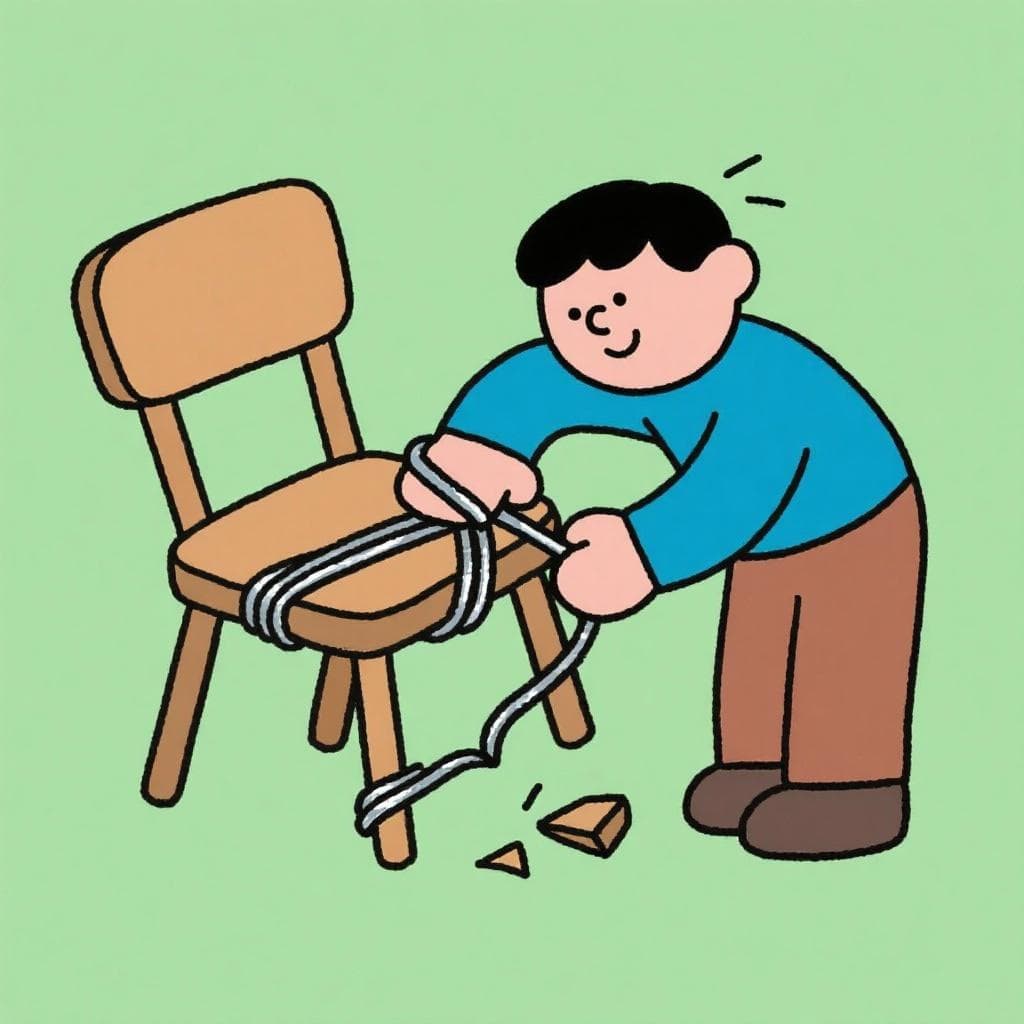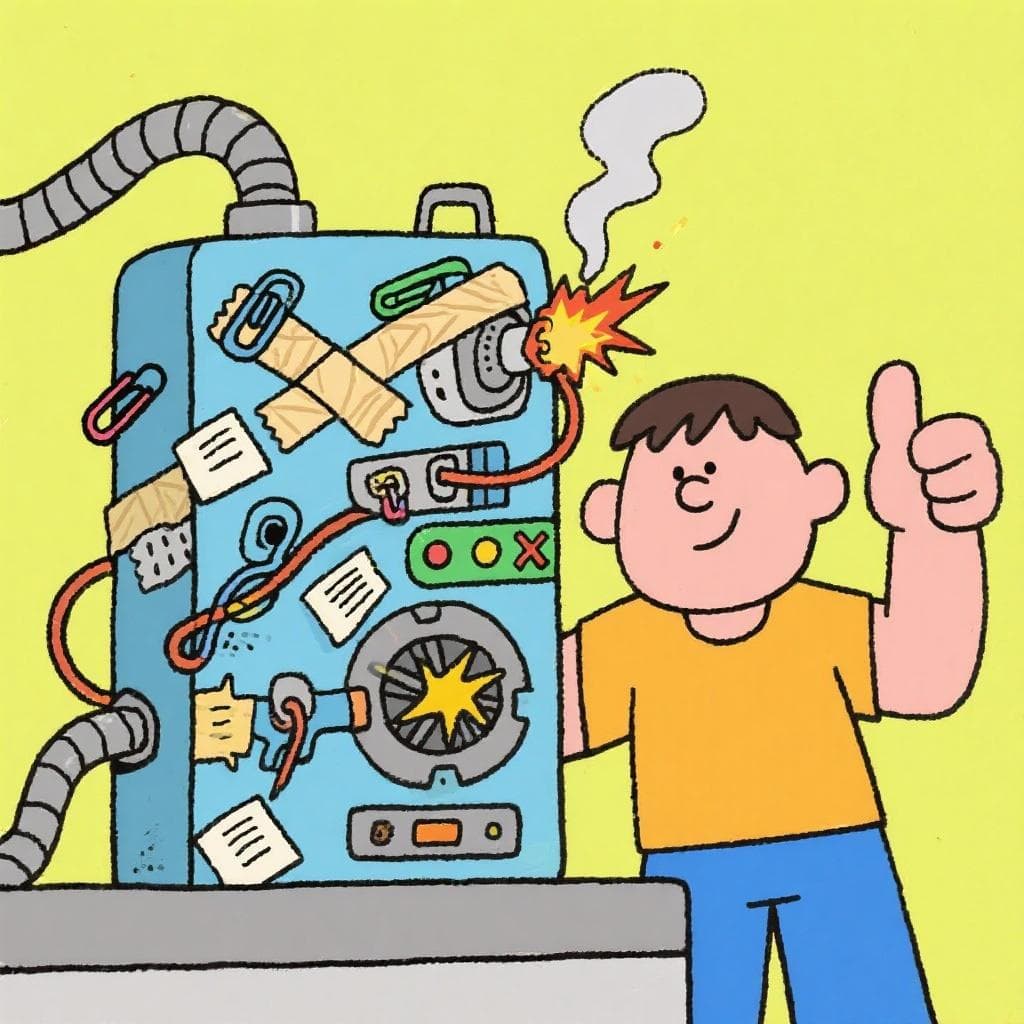Atar con alambre
/ah-TAR kon ah-LAHM-breh/
To do a quick, temporary, or shoddy repair; to patch something up in a makeshift way.
💡 Understanding the Idiom
🎨 Literal vs. Figurative

Literally, this means 'to tie with wire'.

It means to make a quick, temporary, or makeshift repair.
Key Words in This Idiom:
📝 In Action
El motor del coche se rompió, pero lo até con alambre para poder llegar al taller.
B2The car engine broke, but I patched it up just enough to get to the mechanic's shop.
Este programa de software está atado con alambre; funciona, pero se cae a cada rato.
C1This software program is held together with spit and glue; it works, but it crashes all the time.
No tenemos presupuesto para una reparación profesional, así que tendremos que atarlo con alambre por ahora.
B2We don't have the budget for a professional repair, so we'll have to do a quick fix for now.
📜 Origin Story
This phrase comes directly from real life. In rural areas or times of scarcity, when proper tools or replacement parts weren't available, a sturdy piece of wire ('alambre') was the go-to material for quick, essential repairs on everything from fences to farm equipment. The expression captures this spirit of resourceful, if not pretty, problem-solving. It's the solution you use when you just need something to work for a little while longer.
⭐ Usage Tips
For Temporary or Shoddy Fixes
Use this when you're talking about a solution that is not permanent, professional, or high-quality. It implies the fix is temporary and might not be very reliable. It can describe physical objects (like a broken gate) or abstract things (like a poorly designed plan).
❌ Common Pitfalls
Not for Professional Work
Mistake: "Using this phrase to describe a high-quality or delicate repair. For example, 'El cirujano ató la herida con alambre.'"
Correction: This sounds alarming! The idiom specifically implies a non-professional, makeshift job. For proper work, use verbs like 'reparar' (to repair), 'arreglar' (to fix), or 'solucionar' (to solve).
🌎 Where It's Used
Argentina
Extremely common and culturally significant. The concept of 'lo atamos con alambre' is a well-known part of the national identity, representing ingenuity in the face of scarcity or difficulty.
Spain
Common and widely understood, though perhaps less culturally embedded than in Argentina.
Latin America
Widely understood in many countries, particularly in the Southern Cone (Chile, Uruguay), but its cultural resonance is strongest in Argentina.
🔗 Related Idioms
✏️ Quick Practice
💡 Quick Quiz: Atar con alambre
Question 1 of 1
If someone says 'Mi bicicleta está atada con alambre', what do they mean?
🏷️ Tags
Frequently Asked Questions
Is 'atar con alambre' always a negative thing to say?
Not necessarily! While it does mean the repair is low-quality, it can also carry a positive tone of resourcefulness and cleverness—making something work with limited resources. The context and your tone of voice will show if you're being critical or admiring the ingenuity.